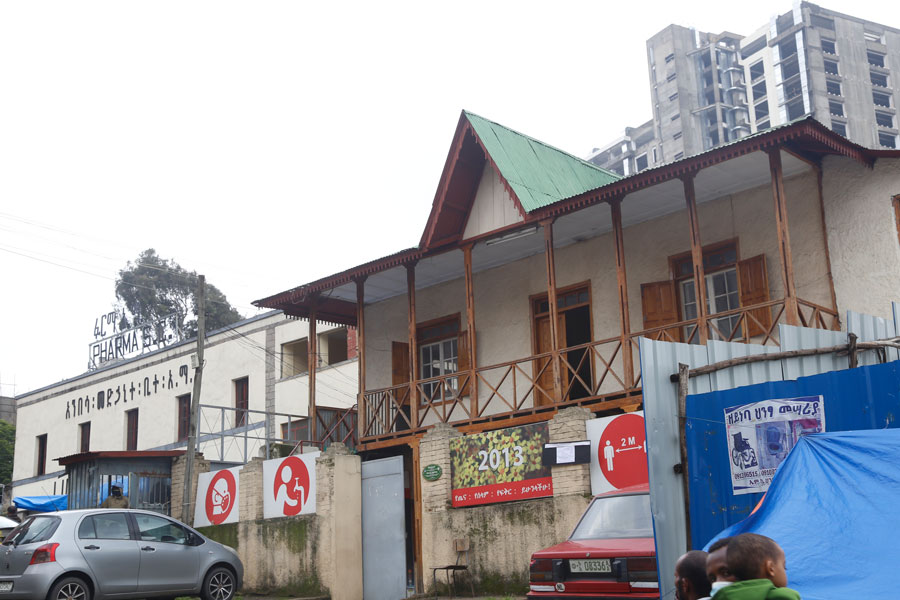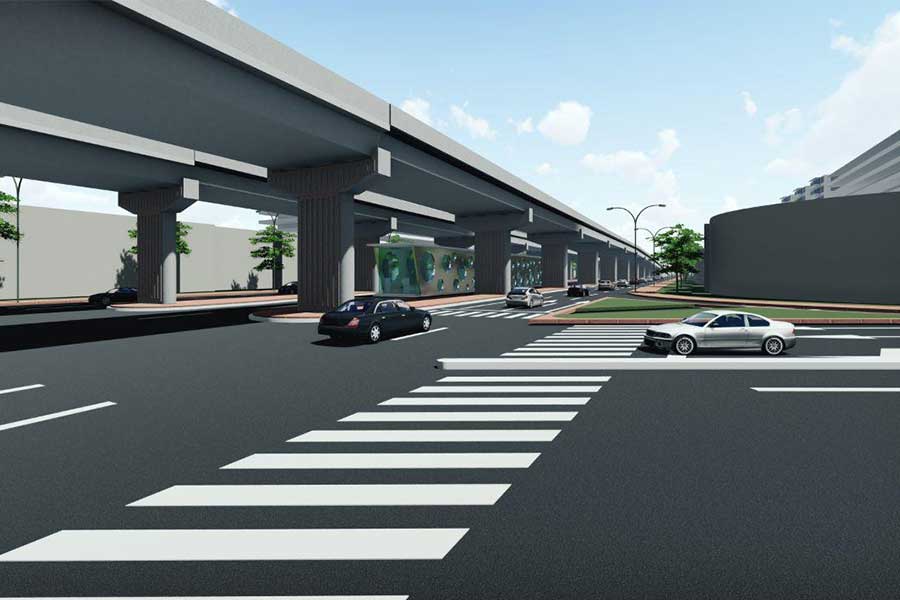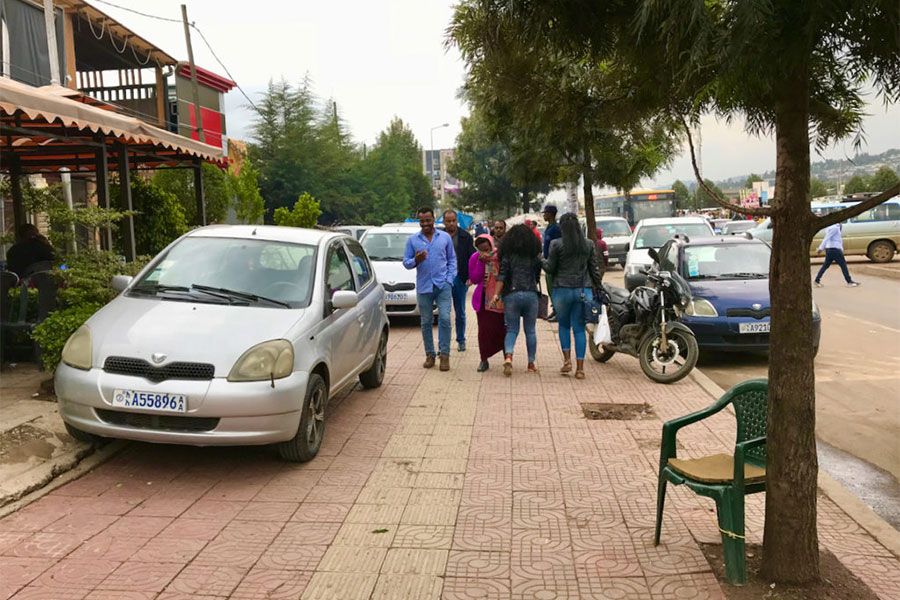
View From Arada | Oct 19,2019
A few raindrops signaled that the monsoon storm that has been hovering overhead since late in the afternoon last Tuesday was about to unleash its moisture-laden load, and everyone on the street scrambled for shelter. Within minutes, a heavy downpour came in torrents, drenching everything in sight, and the hauling winds sent the rain horizontally every which way that a mere roof shelter provided no escape to a group huddled outside the railway ticket kiosk of Temenja Yajz along the old Debrezeit Road.
As the storm intensified and doused the earth incessantly, the clerk inside the ticket office opened the doors to the group, now wet from head to foot, and allowed them to shelter inside. Soon a group of police officers manning the station abandoned their posts and run into the small kiosk, and pretty soon there was a small crowd that engaged in casual conversation.
While the group watched through a small window the intense downpour and hail beat down against the trees and structures, and a flash flood slowly built between the concrete embankment of the railway tracks and the two-lane northbound lanes of Debrezeit Road.
The force of the rainfall decreased within a few minutes, while the flooding intensified quickly and severely, now channeled between the impervious surface of the road and the concrete wall. A raging torrent of muddy water raced downhill carrying with it sediment, rocks and whatever else humanity has cast away as trash. Buses, automobiles, taxis and trucks came quickly to a screeching halt, some struggling to wade through the deluge precariously. Their situation was dangerous, since they encountered a fast-moving water that suddenly entrapped them.
The southbound lane of Debrezeit Road, just above Lancha, fared no better and was flooded. The difference here being that the stormwater raging on that side of the concrete wall must have unearthed raw sewage, for the stench of the water was unbearable.
Minor thunderstorms of relatively short duration create significant flooding in Addis Abeba. It is hard to imagine what could happen during inevitable episodic storm events that happen once in a century, writes Ambessaw.
The flash flood occurred so quickly that residents were caught off-guard, almost all of them sheltered on high ground, where access to the train station required jumping into the torrent in the middle of the lane, which only a few adventurers attempted.
The primary culprit in this event is the failed urban development of Addis Abeba. The capital, a mountainous city, is a natural candidate for urban flash flooding risk and the municipal authorities have not appropriately taken this condition in their planning. The Addis Abeba Light Railway system has been the cause of various flooding events throughout the city, but it is not the only offender.
The plugged, deteriorated, broken and unmaintained storm drain systems that lay gaping across the city are incapable of draining the city. Properly functioning drainage systems are nonexistent in the city, as are many new roads that are constructed with ill-designed storm drain systems. A case in point is the area around Temenja Yajz where several newly constructed boulevards run perpendicular to the train tracks that channel storm water directly into it.
When the water hits the concrete barrier of the railway tracks, it creates the runoff that moves rapidly downhill, creating havoc as was the case last Tuesday evening. The railroad system and the adjacent roads, not engineered to account for the surface runoff that drains out of the area, suffers from recurrent flooding and the municipal authorities seem to be oblivious to the fact.
If a minor thunderstorm of a relatively short duration creates significant flooding in the city, what happens during an inevitable episodic storm event that happens once in a 100 years?
Addis Abeba, even without the ill-designed, haphazardly built and unkempt infrastructure faces a challenge in its management of stormwater, primarily because it is a mountain city bisected by a myriad of rivers and waterways. Its urban sprawl was not tempered by planning, and any available land was built upon, almost always without regard to how the city drains during rains.
The city has built few proper drainage channels, sewers, outfalls or detention ponds to retard the flowing water away from the developed areas, or to convey it safely out of the urban centres. Whatever drainage ditches and culverts are installed, they are constructed poorly and are hardly maintained. The rainy seasons come and go, but the stormwater infrastructure remains as is, albeit decaying continuously.
The drains across the city are filled with debris, trash, eroded soil and rocks that have undermined their carrying capacity. Thus, filled with refuse and in a state of utter deterioration by damage and long neglect, the drain systems are incapable of conveying the water that flows during storm events. As a result, the roadways become the conveyers of the runoffs turning it to concrete rivers, harbingers of more catastrophic flooding episodes that will surely come.
Infrastructure systems play a vital role in the nation’s economic wellbeing and their performance is equally important to the improvement of the quality of life of the citizens, public safety and welfare. Why else would the state incur billions of dollars of debt to build them then?
The municipal authorities, by neglect and intentional avoidance, are sidestepping the need for a competent stormwater management system or from improving the sorry state of the rivers and streams that grace the city. Instead, the city is chasing a phantom river restoration project that may end up costing the nation some 29 billion Birr which will contribute nearly nothing to improve the infrastructure that are in dire need of improvement.
All the natural drainage systems that carry the monsoon run-off of this city have been altered, paved over, converted into roads, buildings and slums. The city has forgotten that it has rivers that nourished it for millennia before its riparian corridors were built over and choked by untreated sewage and garbage.
The government's apathy towards its natural heritage of rivers and streams needs to be reversed.
The proper workings of the drainage channels of the city are the links between the rivers and the urban centres. They are the very solutions that will save the city from recurring floods.
PUBLISHED ON
Apr 26,2019 [ VOL
20 , NO
991]


View From Arada | Oct 19,2019

Fortune News | Jul 17,2022

View From Arada | Aug 07,2021

Fineline | Sep 14,2019


Commentaries | Mar 30,2019

Radar | Jun 22,2024

Fortune News | Nov 09,2019

Agenda | May 11,2024

View From Arada | Dec 09,2023

Dec 22 , 2024 . By TIZITA SHEWAFERAW
Charged with transforming colossal state-owned enterprises into modern and competitiv...

Aug 18 , 2024 . By AKSAH ITALO
Although predictable Yonas Zerihun's job in the ride-hailing service is not immune to...

Jul 28 , 2024 . By TIZITA SHEWAFERAW
Unhabitual, perhaps too many, Samuel Gebreyohannes, 38, used to occasionally enjoy a couple of beers at breakfast. However, he recently swit...

Jul 13 , 2024 . By AKSAH ITALO
Investors who rely on tractors, trucks, and field vehicles for commuting, transporting commodities, and f...

Jul 12 , 2025
Political leaders and their policy advisors often promise great leaps forward, yet th...

Jul 5 , 2025
Six years ago, Ethiopia was the darling of international liberal commentators. A year...

Jun 28 , 2025
Meseret Damtie, the assertive auditor general, has never been shy about naming names...

Jun 21 , 2025
A well-worn adage says, “Budget is not destiny, but it is direction.” Examining t...